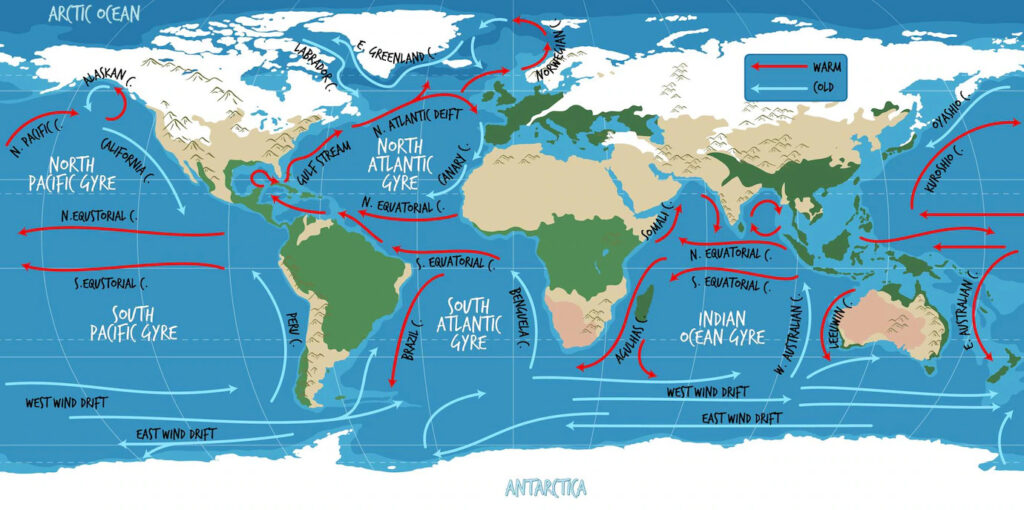cargo ship routes from china to europe
China and Europe are two of the largest and most important trading partners in the world, with a total trade volume of over $600 billion in 2023. Cargo ship routes are the main mode of transportation for goods between these two regions, accounting for more than 90% of the total trade volume. Therefore, choosing the right cargo ship route is crucial for both shippers and carriers, as it can affect the cost, speed, reliability, and environmental impact of the shipment.
Key Factors in Determining Cargo Ship Routes

There are many factors that influence the choice of cargo ship routes, such as:
- Distance: The distance between the origin and destination ports is one of the most obvious factors that affect the fuel consumption, transit time, and shipping cost of the cargo ship. Generally, the shorter the distance, the lower the cost and the faster the delivery. However, distance is not the only factor, as other factors such as weather, traffic, and geopolitics can also affect the route efficiency.
- Capacity: The capacity of the cargo ship refers to the amount of cargo that it can carry, measured in twenty-foot equivalent units (TEUs). The capacity of the cargo ship determines the economies of scale and the profitability of the route. Generally, the larger the capacity, the lower the cost per unit of cargo and the higher the profit margin. However, larger ships also have higher operating costs, such as port fees, maintenance, and crew wages, and may face more challenges in navigating narrow or shallow waterways.
- Demand: The demand for cargo ship routes depends on the supply and demand of goods between the origin and destination markets. The demand for cargo ship routes can vary depending on the season, the economic situation, the consumer preferences, and the trade policies of the countries involved. Generally, the higher the demand, the higher the freight rates and the occupancy rates of the cargo ship. However, demand can also be unpredictable and volatile, and may require flexible and responsive route planning.
- Competition: The competition for cargo ship routes depends on the number and quality of the alternative routes and carriers that serve the same origin and destination markets. The competition for cargo ship routes can affect the pricing, service, and innovation of the route. Generally, the higher the competition, the lower the freight rates and the higher the service standards and customer satisfaction. However, competition can also lead to overcapacity, price wars, and consolidation in the industry.
The Most Popular Cargo Ship Routes from China to Europe

There are several cargo ship routes that connect China and Europe, each with its own advantages and disadvantages. Some of the most popular ones are:
- The Suez Canal Route: This is the most traditional and widely used route, which passes through the Suez Canal in Egypt and connects the ports of Shanghai, Ningbo, and Shenzhen in China with the ports of Rotterdam, Hamburg, and Antwerp in Europe. This route has the advantage of being the shortest and fastest, with an average transit time of about 23 days. It also has the advantage of being the most stable and secure, with low risk of piracy, weather disruptions, or political conflicts. However, this route also has some disadvantages, such as the high congestion and toll fees of the Suez Canal, the limited capacity and draft of the canal, and the dependence on the political and economic situation of Egypt and the Middle East.
- The Cape of Good Hope Route: This is an alternative route, which bypasses the Suez Canal and goes around the Cape of Good Hope in South Africa and connects the ports of Shanghai, Ningbo, and Shenzhen in China with the ports of Rotterdam, Hamburg, and Antwerp in Europe. This route has the advantage of being able to accommodate larger and more efficient ships, with a capacity of up to 24,000 TEUs. It also has the advantage of being more flexible and resilient, as it can avoid the potential disruptions and delays of the Suez Canal. However, this route also has some disadvantages, such as being longer and slower, with an average transit time of about 34 days. It also has higher fuel consumption and emissions, and higher exposure to piracy, weather, and political risks in the Indian Ocean and the Gulf of Guinea.
- The Arctic Route: This is an emerging route, which exploits the melting of the Arctic ice and goes through the Northeast Passage or the Northwest Passage and connects the ports of Dalian, Tianjin, and Qingdao in China with the ports of Rotterdam, Hamburg, and Antwerp in Europe. This route has the advantage of being the shortest and fastest, with an average transit time of about 18 days. It also has the advantage of being the most environmentally friendly, as it reduces the fuel consumption and emissions by up to 15%. However, this route also has some disadvantages, such as being seasonal and unpredictable, as it depends on the ice conditions and the weather of the Arctic. It also has limited capacity and accessibility, as it requires ice-class ships and icebreaker escorts, and faces regulatory and sovereignty issues from the Arctic countries.
Advantages and Disadvantages of Each Cargo Ship Route
The following table summarizes the advantages and disadvantages of each cargo ship route from China to Europe:
Table
| Route | Advantages | Disadvantages |
|---|---|---|
| Suez Canal | Shortest and fastest | High congestion and toll fees |
| Stable and secure | Limited capacity and draft | |
| Dependent on Egypt and Middle East | ||
| Cape of Good Hope | Larger and more efficient ships | Longer and slower |
| Flexible and resilient | Higher fuel consumption and emissions | |
| Higher piracy, weather, and political risks | ||
| Arctic | Shortest and fastest | Seasonal and unpredictable |
| Environmentally friendly | Limited capacity and accessibility | |
| Regulatory and sovereignty issues |
Factors to Consider When Choosing a Cargo Ship Route
When choosing a cargo ship route from China to Europe, there are several factors that shippers and carriers should consider, such as:
- Cost: The cost of the cargo ship route is determined by the distance, the capacity, the demand, and the competition of the route, as well as the fuel prices, the port fees, the toll fees, and the insurance premiums. Shippers and carriers should compare the total cost of each route and choose the one that offers the best value for money.
- Time: The time of the cargo ship route is determined by the distance, the speed, the weather, and the traffic of the route, as well as the customs clearance, the port operations, and the inland transportation. Shippers and carriers should compare the transit time and the reliability of each route and choose the one that meets the delivery deadlines and the customer expectations.
- Risk: The risk of the cargo ship route is determined by the security, the stability, the safety, and the sustainability of the route, as well as the political, economic, social, and environmental factors that affect the route. Shippers and carriers should compare the risk level and the mitigation measures of each route and choose the one that minimizes the potential losses and damages.
Case Studies of Successful Cargo Ship Routes

There are some examples of successful cargo ship routes from China to Europe, such as:
- The COSCO Shipping Panama: This is a container ship operated by COSCO Shipping, the largest shipping company in China and the world. It was the first ship to transit the expanded Suez Canal in 2023, carrying 9,472 TEUs of cargo from China to Europe. It completed the voyage in 21 days, saving 11 days and 30% of fuel compared to the Cape of Good Hope route. It also demonstrated the strategic and economic importance of the Suez Canal for the China-Europe trade.
- The MSC Gülsün: This is a container ship operated by MSC, the second-largest shipping company in the world. It was the largest ship ever to sail around the Cape of Good Hope in 2023, carrying 23,756 TEUs of cargo from China to Europe. It completed the voyage in 32 days, avoiding the congestion and the fees of the Suez Canal. It also showcased the technological and operational capabilities of MSC and the advantages of the ultra-large container ships.
- The Maersk Venta: This is a container ship operated by Maersk, the largest shipping company in Europe and the world. It was the first ship to complete a commercial voyage through the Northeast Passage in 2023, carrying 3,600 TEUs of cargo from China to Europe. It completed the voyage in 18 days, saving 10 days and 15% of emissions compared to the Suez Canal route. It also marked a historic milestone for the Arctic shipping and the China-Europe trade.
Challenges and Risks in Cargo Ship Routes

There are some challenges and risks that shippers and carriers face when operating cargo ship routes from China to Europe, such as:
- The COVID-19 pandemic: The COVID-19 pandemic has caused unprecedented disruptions and uncertainties in the global trade and shipping industry, affecting the supply and demand, the prices and rates, the operations and regulations, and the health and safety of the cargo ship routes. Shippers and carriers have to adapt to the changing situation and cope with the various impacts and implications of the pandemic.
- The Suez Canal blockage: The Suez Canal blockage was a major incident that occurred in March 2023, when a giant container ship named Ever Given ran aground and blocked the canal for six days, disrupting the traffic of hundreds of ships and causing a global supply chain crisis. The blockage highlighted the vulnerability and dependence of the China-Europe trade on the Suez Canal route, and prompted some shippers and carriers to consider alternative routes or modes of transportation.
- The Arctic geopolitics: The Arctic geopolitics is a complex and contentious issue that involves the interests and claims of the Arctic countries, such as Russia, Canada, Norway, Denmark, and the US, as well as the non-Arctic countries, such as China, that seek to access and exploit the Arctic resources and routes. The Arctic geopolitics poses challenges and risks for the cargo ship routes that pass through the Arctic, such as the legal and regulatory uncertainty, the military and diplomatic tensions, and the environmental and social responsibility.





